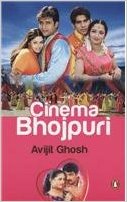That a time when regional political parties continue to assert their identity, the rise of Bhojpuri films is only part of the remodeling of Indian cinema. The availability of cheap technology has allowed dozens of ‘little cinemas’ to flourish in dialects such as Chattisgarhi, Kumaoni, Gharhwali and Khariboli. Even Ladakhis have begun making films in their local dialect. Avijit Ghosh, Bhojpuri Cinema (p. 94)
Within a few years of its inaugura-tion at Grand Cafe, Paris, cinema had cast its magical spell over people in all continents luring a number of showmen and entrepreneurs who made it the most massive mass art ever in the history of humankind. Though cinema has such an international history, enthralling people and drawing them into its global network and idioms, it also has ‘national’ and ‘local’ histories with its own specific characteristics.
The latter exhibit a great variety as they followed trajectories of their own depending on local narrative traditions, existing conditions of performing arts and appreciation, openness to new forms, and of course, the socio-economic environment that enveloped all these.

